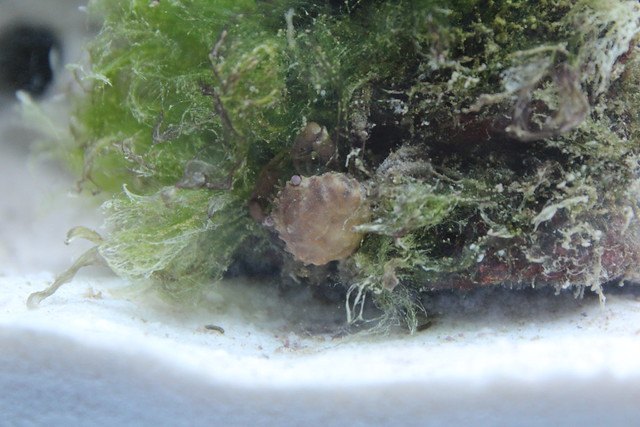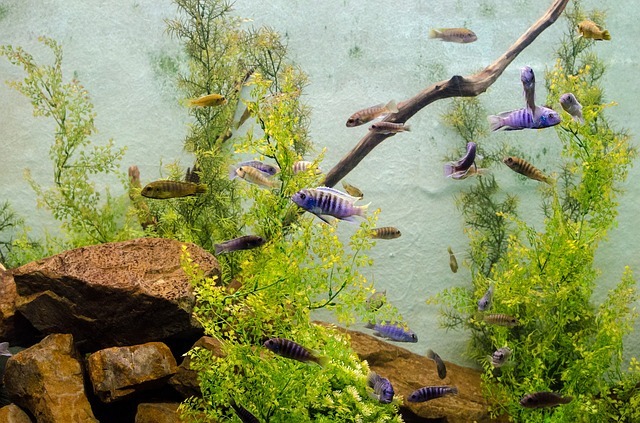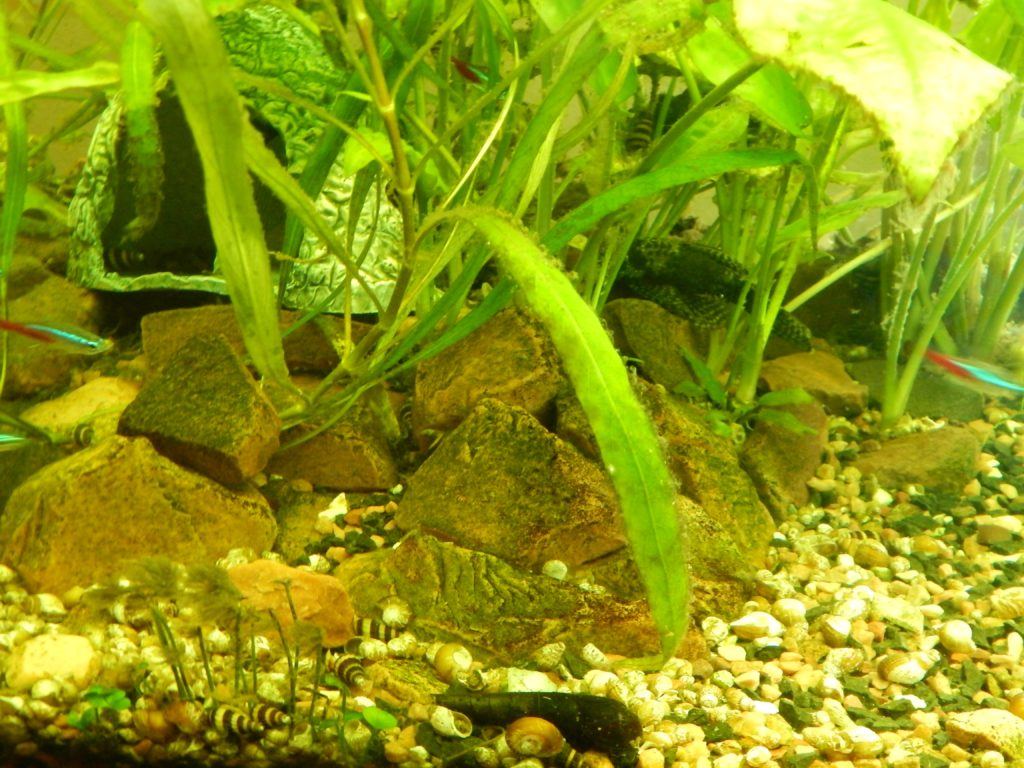When caring for an aquarium, it’s important to make sure the ecosystem is perfectly suited to your fishy residents.
That being said, there’s not a single aquarist who hasn’t dealt with an algae invasion at least once – let alone a green hair algae invasion.
If you find yourself staring down a collection of soft, hair-like follicles in your tank, don’t fret. This guide will teach you how to get rid of green hair algae without compromising the comfort of your tank’s residents.
Contents
What is Hair Algae?
Algae, generally speaking, is a broad term.
It applies to a number of different organisms that aren’t quite in the moss family, but that aren’t high plants, either. Anything that exists in between and that doesn’t bear seeds is, as such, considered to be algae.
You can break algae classifications down further. Microscopic, unicellular algae exist beyond the capacity of the human eye. This breed of algae binds together, net-like, and yet still remains invisible to humans.
Comparatively, macroscopic algae, like seaweed, are so well-known that humans around the world eat it on a daily basis.
Green Hair Algae
That is to say, algae is everywhere, and it’s a significant part of a number of ecosystems across the planet. Green hair algae is one of the most commonly known.
As it grows, it takes on the appearance of silky green hair. It forms coats or short filaments that grow close together and that are tremendously difficult to remove from your aquarium.
If you don’t treat hair algae quickly, it has the potential to grow like mad. Though it starts its growth in the flatter plains of your fish tanks, it can connect to tank walls quickly and then move on to just nearly any other surface its filaments come into contact with.
If you have a saltwater tank, you’re in particular trouble. Hair algae in saltwater will spread quickly, and you may have to replace a tank in its entirety if you ever want it to be hair-algae-free again.

Where to Find Hair Algae
Beyond being an invasive species – and one that grows quickly at that – how can hair algae impact the lives of the critters in your home aquarium? Further, how does it make its way into your aquarium in the first place?
To better understand this, you need to pull back and look at the existence of algae in general. Algae can float through the air, lay dormant in aquarium rocks, or simply form out of the molecules in your water.
Hosting an aquarium in your home that’s entirely free of algae – any sort of algae – is effectively impossible.
Hair Algae Causes
What, specifically, causes hair algae to grow in your aquariums? Hair algae most frequently starts to appear in your fish tanks when you’ve recently cycled the tank.
Since the ecosystem you’ve built within the tank is still returning itself to normal, algae has the potential to take advantage of the environment’s chemical imbalance.
Sometimes, after a tank has returned to its normal nutrient state, any hair algae that started to sprout when the tank was still settling will disappear. If you happen to house any invertebrates in your tank, this algae will also be chewed away by your local residents.
If you don’t manage to reset your tank to its original and ideal environment status, then hair algae will take advantage. As such, you need to ensure that – after you cycle your tank – the light, CO2, and nitrogen levels are as close to their original state as possible.
If you notice that the other plants you’ve interwoven into your aquarium are struggling to grow after you’ve cycled the tank, then you may have both a nutrient imbalance and a hair algae invasion on your hands.
The most basic causes of hair algae growth include:
- Nutrient imbalance.
- CO2 deficiencies in your tank.
- Nitrogen deficiencies.
- Long light exposure hours.
- Light that’s too intense.
- Not enough tank foliage competition.
What Problems Does Green Hair Algae Cause?
Thus far, hair algae appears to be a tank nuisance. Otherwise, it doesn’t seem this algae has other negative effects on the ecosystem of your tank.
You can be annoyed by it, but it’s not harmful. Right?
Not so. Hair algae are considered an invasive tank species for a reason. The rate at which it grows and the mass it can obtain has the potential to not only compromise the aesthetic of your tank. It can put all life within that tank – plant and animal alike – at risk.
If you leave it alone to grow, you may quickly have a tank of algae and nothing else. For example, hair algae begins to grow in the flatter parts of your aquarium. Before long, it can root out all of the other plant life that you’ve tried to incorporate.
Then, it can move its way up to your aquarium walls, cutting off the tank’s exposure to light and furthering the tank’s nutrient imbalance.
If you let hair algae grow until it fills your tank, and you don’t have creatures inside that will naturally eat away at the substance, then hair algae has the potential to kill or trap your fish.
This is the danger of hair algae. It grows extremely quickly, is difficult to get rid of, and appears in just about every aquarist’s tank at least once.
You need to take the threat seriously, or else you could lose the emotional and economic investments you’ve put into your home aquarium.
This video goes into more detail on hair algae.
How to Get Rid of Hair Algae
What should you do, then, if you notice green, hair-like follicles starting to pop up in your fish tank after you’ve recently cycled the water?
There are a number of ways to treat hair algae. Because of the algae’s pervasiveness, though, you’ll likely have to undertake a combination of the solutions listed below to remove it from your tank entirely.
Also note that if hair algae has taken over entirely, your best bet is just to dispose of the tank. There are chemical concoctions that can kill off the algae for the most part, and they’ll be touched on here.
However, some of these combinations can disrupt the lives of your fish, and they’re not 100 percent guaranteed to keep hair algae away for good.
As such, you may find it less time consuming to find a new tank for the watery critters you keep in your home.
Physical Removal
The first solution is, of course, the most direct. You can begin physically removing the algae from your tank.
Instead of reaching in with determination and hope, first, remove any fish or plants that you have in your tank. Also lift out any decorations, rocks, or other items and place them in a container, where they can be scrubbed thoroughly.
Next, make sure the pumps in your tank have been turned off. If you forget, you risk the pumps blowing filaments of hair algae into the spots of your tank that you can’t reach. Before long, you’ll have to repeat this process all over again.
You should also have a disposable container nearby, where you can place the hair algae after it’s been removed from the tank. You’ll be throwing this container away after using it, so make sure it’s not your favorite bucket.
Above all else, wear gloves while removing hair algae from your tank. The hair algae itself isn’t dangerous to humans, and it’s not going to hurt you to touch it.
However, if hair algae filaments stick to your skin and aren’t washed off as you prepare your tank again, all your hard work will go to waste. Additionally, gloves keep you from having to feel the creepy sensation of hair algae’s touch first-hand. Who’s going to say no to that?
Once those bases are covered, you can dig in and start ripping the hair algae out by the root.
Nutrient Re-balance
If there are too many nitrates, silicates, or phosphates in your water, you risk boosting the growth of any hair algae filaments in your tank that have otherwise been lying dormant.
As such, you need to test your tank water for its balance of these nutrients when replacing the water in your newly-cleaned tank.
Ideally, use water from your tap to refill your tank. It’s recommended that you filter this water to remove any nitrates that might otherwise slip through your tap.
To provide any lingering follicles of hair algae with competition for nitrates and other resources, you can integrate macroalgae into this new water.
In the interim, assess the functionality of your tank. Is your protein skimmer working as it should be? Do you need to replace your RO/DI? Is there some other way you can reduce the amount of food waste that circulates through your aquarium?
Ask yourself these questions. Try to ensure all of the factors therein are up to snuff. You can even consider reducing the number of times you feed each day, subsequently reducing the number of nitrates and waste that’ll otherwise move throughout your tank.
Light Adjustment
Once you’ve fiddled with the parameters of your tank, you’ll need to assess the lights you have working overhead.
As has been mentioned, prolonged exposure to bright light or light that’s too intense can disrupt the balance of your tank and encourage hair algae to grow. This invasive species likes its environments bright and harsh.
Ideally, you should install white/blue lights above your fish tank. Hair algae will not thrive when exposed to bluer tones, so try finding light on a bluer LED spectrum at your local shop.
You may even consider leaving your tank lights off for a day or two after cleaning out your aquarium. This way, you’ll starve any remaining hair algae follicles of the opportunity to grow.
Water Flow
Luckily, that’s not the only way to get rid of green algae in a reef tank. You should also double check that your powerheads and pumps are functioning at their highest capacity.
Hair algae grows most quickly in stagnate water. If there are spots in your tank that have gone still or that your pumps can’t reach, you may be providing algae with the perfect area to grow.
If you notice a number of these dead spots, consider adding another pump to your tank. Your water needs to be moving if you want the environment to remain as healthy as possible.
Your fish will likely be happier with this more natural environment as well; no lake, ocean, or river is ever fully still!
Natural Predators
It’s also worth introducing some of hair algae’s natural predators into your tank after you’ve cleaned it up. These fish, snails, and shrimp will eat any remaining bits that have survived the purge.
If your tank sees a return of the algae, they’ll prevent it from spreading without the need for you to engage in any hard labor.
Some of hair algae’s natural predators include:
- Amano Shrimp.
- Dwarf Shrimp.
- Red Fire Shrimp.
- Red Bee Shrimp.
- Mollies (though, be warned: mollies may also eat your other fish).
- Siamese Algae Eaters.
- Florida Flag Fish.
If you’ve already established a pretty harmonious tank environment and don’t want to disrupt the lives of your current residents, this may not be the solution for you.
However, if you’re preparing a tank for a new community and want to preemptively bar a hair algae invasion, these critters will do you good.
Here’s a video explaining more on green hair algae.
Making Sure Hair Algae Doesn’t Come Back
If you definitively want to keep hair algae at bay, you can work with food grade hydrogen peroxide and clean your tank well. It shouldn’t hurt any of your tank’s residents, but try to keep this solution as a last resort.
Mix together a 12 percent concentration of hydrogen peroxide. Introduce it to your tank at 3ml per 10 gallons of water.
Let your tank sit for a few hours, then return and cycle out the water. You shouldn’t have to worry about hair algae returning for a good, long while.
Have you dealt with hair algae in your tank?





